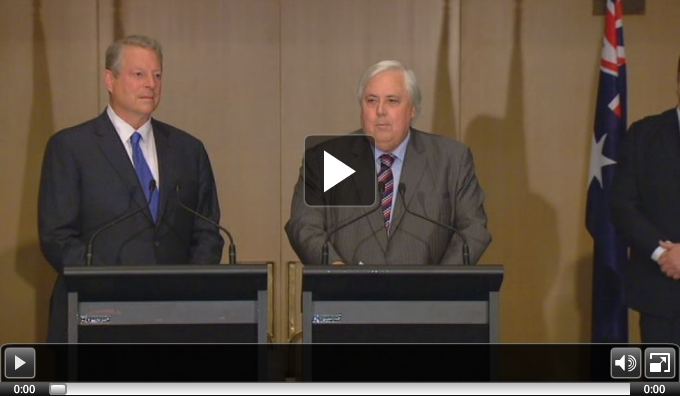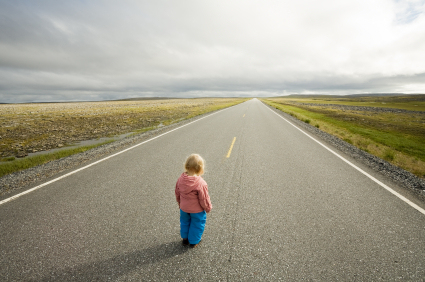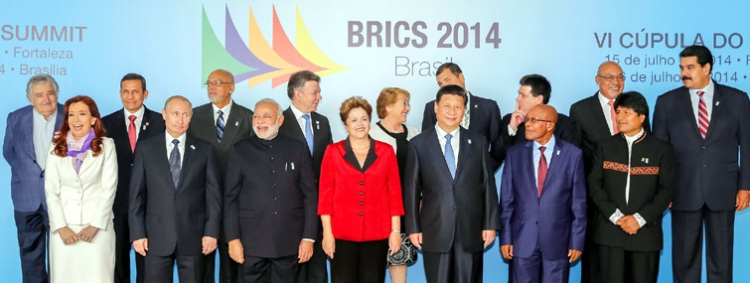With tragedy reigning in Palestine and Ukraine this week, it may be a little hard to imagine that we are now less than 500 days away from the Paris 2015 summit. But perhaps in the wake of these events, the news of new developments in renewable energy, renewed climate finance efforts and invigorated social movements is just what you might be looking for.
As while the road to Paris may not be the most newsworthy road the world must take, its lonely bends and twists are ones we all must navigate together.
Last weekend, World Leaders of the Major Economies Forum and the Petersberg Climate Dialogue tried just that. With positive moves from Germany’s Angela Merkel to donate $1 billion to the Green Climate Fund, there are renewed hopes that more countries will follow her lead and we may even reach the magical $15 billion figure rumoured to be the key to stirring up negotiations in Lima at the end of the year. This will be tough little cookie to crack, and with Climate change still off Tony Abbott’s agenda for the G20 summit in November, it seems like Ban Ki-moon’s climate summit in September will be the time and place for the world’s climate accountants to get their cheque books ready.
Seems like a war-torn task? Well that’s why good-ol Ban’s banking on Mary Robinson to bring her peace-building panache to the UN podium, as the new UN Special envoy for Climate Change. Its a big role, but this battle-hardy Elder has been fighting all her life, and her diplomatic wisdom could become a wild card for climate negotiations going forward.
But her burden will be lifted by efforts by China and the US to muscle further a bilateral links on technological transfer between the two nations, knowledge sharing, and further efforts that Todd Stern (US Special Envoy on Climate Change) describe as “essentially to develop a target for post-2020“. This builds off the back of more than 5 years of talks between the two nations around climate change, and it seems to be one of the key foreign policy areas of the Obama administration. Considering the ongoing rhetoric around building trust in the negotiations, it is usually a good sign that these two power hitters are working together. The two economic superpowers will be key to developing the post-2020 vision in Lima, lets just hope that they don’t design something without telling everyone else…
Though that seems unlikely, as Chinese President Xi Jinping has continued his travels throughout Latin America, and is also working on further collaborations with the Peruvian, Brazilian and Venezuelan governments this week. This comes on the back of the Sixth BRICS Summit in Fortaleza Brazil, with a focus on “Inclusive Growth” and “Sustainable Development” attended also by leaders from Russia, South Africa, Brazil and India along with a host of Latin American leaders, also in town for a collaborative party.
While growth is in decline, inequality and emissions continue to rise across almost all BRIC member states. However, the meeting heralded a critical juncture in the future of sustainable development financing as a new, $50 billion BRICS development was agreed on. The bank will operate out of China, with a rotating president. This year, Gujarat’s economical miracle man, Narendra Modi gets his first shot at the big time, with a mandate to challenge the traditional bureaucratic bank-rollers of the IMF and the World Bank. It will be interesting to see the type of projects funded by this new grouping. While the IMF and the World Bank have histories as chequered as a chess board, they have made key reforms of late to support global efforts to limit greenhouse gasses, and it will be interesting to see if new bank of the world’s economic racehorses will race into the lead, or fall into a well-funded greenhouse gremlin.
With Modi moulding his mark into the Bank’s inaugural throne, we can only hope it will break into the lead. The man with the world’s most votes has been calling on some impressive climate change reforms in his early months, with new funding for renewable energy walking down aisle of an arranged solar-rooftop marriage overseen by a potential doubling of the Coal tax, the promise of greater climate leadership looks like honeymoon news for Lima. It’s too early to tell, but my money’s on the Gujarati galloper giving a much needed boost to both the global finance and climate world.
If they turn out to be anything like this Japanese Bank, who just pledged $2 billion for clean energy development, we might all be in for a victory lap.
But Australia‘s recent decision to morally implode and “axe” a tax that took years to grow will certainly not sit lightly on his heels. Considering the Australian parliament is now being mauled by a ten-tonne Mining magnate seeking to protect his own fossilised treasure chest, while also peculiarly partnering with Al Gore to protect renewable energy targets, Australia’s strange stagnation on climate change could unsettle global efforts towards 2015, and its own rainfall.

Close to Australia’s unsettling waters, Indonesia has elected a new President, Joko “Jokowi” Widodo-Jusuf Kalla. Just call him Jokowi. The new leader has little to say at the moment on international affairs, and there are some who worry that this may be his weak point, but he has expressed desires to “reposition the role of Indonesia in addressing global issues”. With forest loss increasing in Indonesia’s Borneon and Sumatran rainforests, and the country asking for $5 billion in increased aid to meet their current emissions targets, we can only watch on nervously as Jokowi takes the reigns of one of the world’s biggest polluters.
There are hopes that Jokowi may be able to follow on from Morocco’s recent move to end fossil fuel subsidies. This type of innovative government intervention could also be utilised by its neighbour Malaysia, and in particular Venezuela, who spends twice as much on fossil fuel subsidies than it does on public health.
Last week Venezuela hosted the Social Pre-Cop, and gave climate activists an unprecedented chance to engage with the government on shaping a more fair and equitable global deal within the UNFCCC. It acts as a model for many other nations to follow, and I can only hope that other countries around the world would consider engaging civil society in a similar manner. Here, the Earth in Brackets team gives you a great insight into what has been going on in the summit. Looks like a challenging, but worthwhile process that may lead to some critical domestic and global developments.
But, as may have been guessed, the meeting didn’t come without its fair share of criticism from local activists disappointed at the country’s lack of action to address the nation’s domestic inconsistencies. Lets hope that this meeting acts as a stepping stone to reform both Venezuela’s domestic action, and the international climate regime.
And to end on a joyous note, small island countries are leading the way on climate change with renewable energy landmarks placed in the soil of both Costa Rica and Jamaica this past week. Costa Rica’s nail-biting exit out of the world cup didn’t stop the nation’s legislators continuing the party, as they approved an almost $1 billion geothermal power plant to push their country closerto carbon neutrality by 2021. Not to be over-awed, Jamaica is now home to the world’s largest wind-solar hybrid power system, and this awesome video below should get even your energy pumping to the revolutions of the highest energy density system you can buy.
Format: Aside

